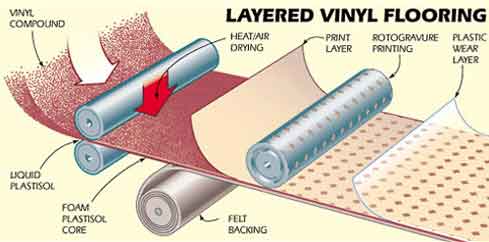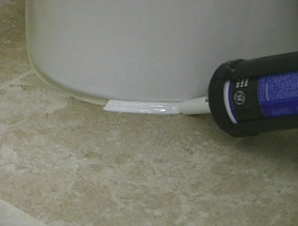Before Buying Vinyl Flooring
Know all you can about vinyl before making a purchase.
Everyone knows how important it is to investigate all of the flooring options before making a purchase. But purchasing vinyl flooring should be quick and easy, right?
Not so fast. The floor covering in your home impacts interior beauty, décor, comfort, livability and upkeep. Any floor can make, or break, a home.
So our advice is to take your time and learn all you can before buying vinyl flooring, and you can start right here, right now.
In this section we will share with you what you should consider before making a vinyl buying decision. Because knowledge about vinyl traits and subtle differences can be invaluable.
Choosing the best vinyl flooring is really about knowing the right combination of characteristics, aesthetics, performance and budget that best meet the needs of your lifestyle.
Yesterday’s vinyl flooring would be floored with today’s.
The vinyl offered today is quite different than the vinyl of yesterday.
Advances in construction and aesthetics have produced fashionable products that are both durable and affordable.
You should know that many of the popular patterns today are inspired by nature, including those that imitate the exquisite look of natural stone.
With an abundance of patterns and new methods of texturing the surface, very realistic vinyl looks have been achieved.
To understand vinyl, think layer cake.
Vinyl is constructed of several different layers: the wear layer, the printed or decorative layer, an inner core consisting of a foam and vinyl layer, and a backing.
You shouldn’t always pick thick.
When selecting your vinyl flooring, thicker is not always better.
It’s the density of the inner core that will help your floor resist rips, tears, gouges and indentations.
Top shoppers concentrate on the top layer.
Understand that the quality of the wearlayer, which is the actual surface layer of the floor, will determine how your floor will stand up to staining, scuffing and scratching.
For example, a urethane wearlayer will help with stain resistance.
We recommend you consult with us about the wearlayer that’s right for your home and lifestyle.
Checkout traffic patterns before vinyl patterns.
When selecting the right vinyl for the rooms in your home, consider the room’s foot traffic and the types of activities that will take place.
Ask us to review with you the manufacturer’s warranty and performance characteristics of the products that are available.
Usually, extended warranties are available with upgraded products, giving you added confidence that your floor will stand up to your active household.
And now, a few lines about seams.
Since most vinyl comes in 6’ and 12’ widths, seaming may be necessary depending on the area to be covered.
Certain patterns will hide seams better. For example, tile patterns with grout lines are better able to mask seams.
Additionally, seam sealers may be visible in contrast with different vinyl textures and finishes.
Finally, a word about caulking: be aware that it’s your responsibility to maintain caulking in heavy water use areas.
Get on top of the bottom line. Know the entire cost of ownership.
The material “cost per square foot” of your vinyl floor is just one component of the entire project cost. To ensure there are no surprises, and the vinyl flooring you select fits within your overall project budget, be sure to ask us to calculate the total cost of your floor covering project. Here’s a list of potential additional expenses you may incur:
- Furniture removal/replacement.
- Demolition/disposal of old floor covering. Depending on the existing floor covering, this can be an expensive item; also, be sure to include the cost to dispose of the old floor covering.
- Subfloor preparation. Depending on the condition of the sub-floor, it may require additional work.
- Product delivery.
- Vinyl installation. Determine the cost per square foot to install it.
- Materials required to complete the installation. Your new vinyl floor may require additional materials, such as moldings, to install it properly.
Also, consult the manufacturer’s warranty and care guide for directions on how and how often your vinyl flooring should be cleaned and the cost to clean it.
There’s much to consider before buying vinyl flooring.
We hope this section has answered some of your questions and underlined the fact that you really can’t learn enough before buying floor coverings for your home.


